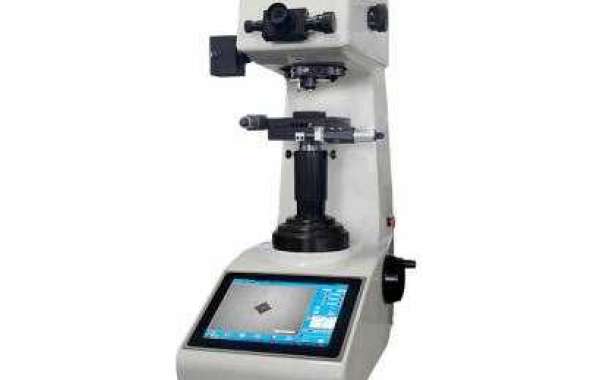A wide variety of materials, including metals, ceramics, polymers, and composites, can have their hardness determined with the help of the adaptable Vickers hardness tester. Interpreting the results of a Vickers hardness test is more than just calculating a value; it's also about learning important information about the characteristics of the material, guaranteeing its quality, promoting research, and even helping with investigations. Understanding these findings will help us choose, process, and use materials in ways that will ultimately result in structures and products that are safer, more dependable, and more effective.
1. Indentation Observation:
- Visually inspect the indentation:Examine its dimensions, form, and symmetry using a magnifying glass or microscope.
- Check for anomalies:Examine any cracks, distortions, or unevenness that might point to a flawed test or problems with the materials.
2. Diagonal Measurement:
- Measure the diagonals:To precisely measure the lengths of the two diagonals of the square-shaped indentation (d1 and d2), use an optical microscope equipped with a measuring graticule or specialized image analysis software.
3. Hardness Calculation:
- Apply the formula: The Vickers hardness value (HV) is calculated using the following formula:HV = 1.8544 × F / d²
- F represents the applied force in kilograms (kg)
- d is the average diagonal length in millimeters (mm)
4. Units and Scales:
- Units: The Vickers hardness value, 400 HV, for example, is expressed in HV units.
- No separate scales:Vickers hardness lacks multiple scales, in contrast to Rockwell hardness.
5. Reading the Result:
- Higher HV value indicates harder material:A higher HV value indicates a harder material with a higher resistance to indentation.
- Typical values: Lead and other soft metals have an HV of about 50, while extremely hard steels have an HV of over 1000.
6. Factors Affecting Results:
- Test force:As the indenter penetrates deeper, higher test forces typically yield lower HV values.
- Material properties:The material's composition, size, and microstructure all affect how hard it is.
- Sample preparation: Results can also be affected by testing conditions and surface preparation.
7. Reporting and Interpretation:
- Include test parameters: Report the HV value, the test force, and any other pertinent information regarding the sample and testing circumstances.
- Compare to standards:To evaluate the qualities and properties of the material, compare the HV value to reference standards or known values for comparable materials.
- Evaluate for specific applications:Based on the material's resistance to wear, scratches, deformation, and other factors, determine whether its hardness is appropriate for the intended use.
Recall that accurate interpretation of the results of the Vickers hardness test necessitates familiarity with the material, the testing setup, and any variables that might affect the measurements. For an accurate assessment, refer to the pertinent material property data and standards.














